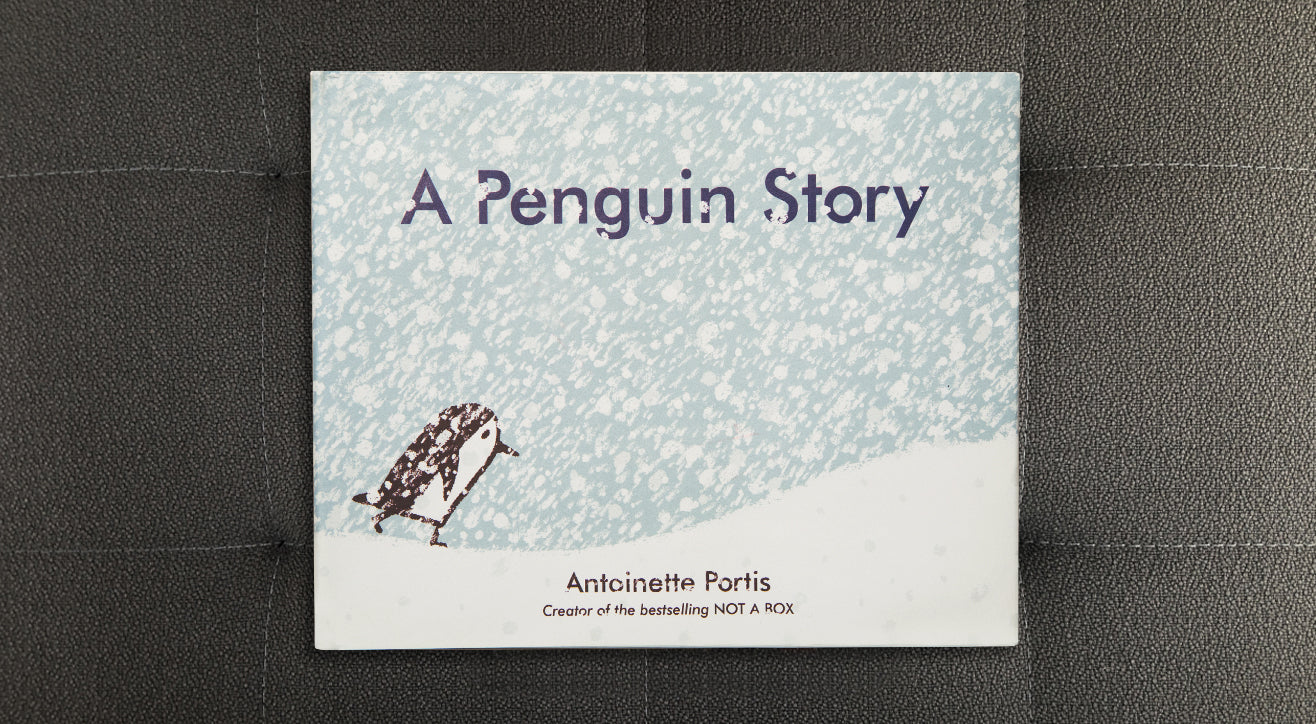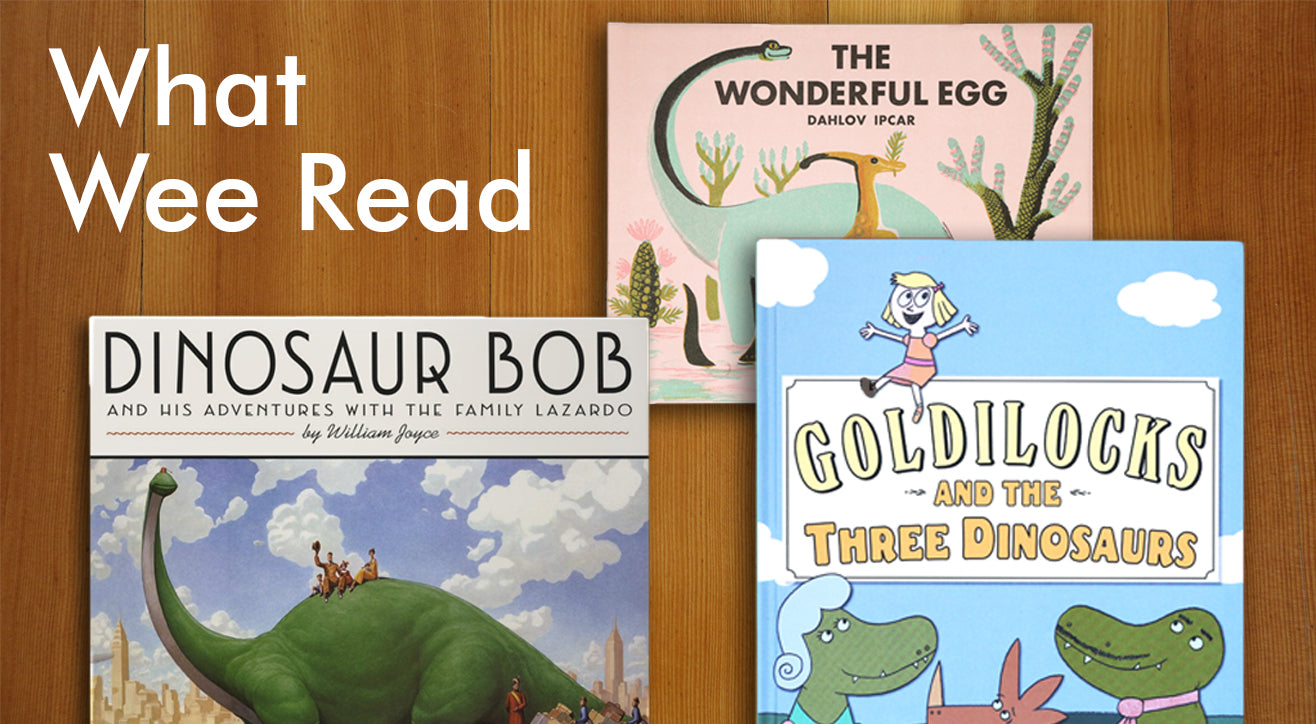
Strega Nona by Tomie de Paola
Based on a classic folktale, Strega Nona ("Grandma Witch") provides her Calabrian village with potions and magical cures. The story involves a magic pasta pot, a warning, a disaster, and a fix that makes our kids giggle. But mostly, it illustrates the importance of following rules — even when the temptation involves delicious noodles.

Once Upon an Alphabet by Oliver Jeffers
This isn’t your usual ABC book (which is a good thing). It’s a collection of silly, somewhat random stories — like G, for instance: Guarding things. Leopold Picard is a really great guard. He’ll guard anything he is given, provided he is asked nicely enough. (Good manners are very important, you know.) The pictures are perfect. And nearly every story makes our kids giggle.

A Penguin Story by Antoinette Portis
From the author of Not a Box, this is a story about curiosity and dreamers. Edna the penguin is looking for something more. She only knows three colors — white ice, black night and blue sea. And while her penguin friends are content with their surroundings, she spends her days searching for something else — there must be a a new color out there. And one day, she finds it: a bright orange Antarctic research station — with scientists wearing bright orange coats, and traveling in a bright orange plane. Edna was thrilled. As they were leaving, a scientist gave her one of his gloves. And the next day, Edna stood atop an iceberg wearing the bright orange glove like a hat, wondering, "What else could there be?”

Bruno Munari's Zoo by Bruno Munari
Originally published in the U.S. in 1963, this is one of the most beautifully illustrated animal books we’ve come across. But it’s Munari's original take on humor— “Flamingos know they are beautiful and strange, and play at symmetry” and “If bears played baseball, polar bears would be umpires” — that make it truly special for both kids and adults. It’s one of our go-to baby gifts, and will stay on our shelf long after our kids outgrow it.
Imaginary Fred by Eoin Colfer and Oliver Jeffers
For a kid who feels lonely (which is worse than getting stung on the head by a bee on a rainy day), if conditions are perfect — involving a jolt of electricity or a bit of magic— an imaginary friend might appear. Like Fred. A little boy named Sam wished for an imaginary friend, and Fred showed up! They did everything together. Fred tried not to think about the day when Sam would meet a real friend and wouldn’t need him anymore … and then something special happens. Connecting with any kid who has ever felt alone, this is a wonderfully quirky and inspiring story of friendship, inclusion and imagination.

Bone Soup by Cambria Evans
In this Halloween version of Stone Soup, Finnigan the skeletal, zombie-like creature is known for his massive appetite. When he hungrily comes into town with his eating stool, his eating spoon, and his gigantic eating mouth, residents desperately hide their food. So Finnigan filled a huge cauldron with water and set it to boil in the middle of the town square. He added a big dry “magic" bone to the pot, and began singing. Curious townscreatures came by and, with some clever prompting, began to add their contributions — bat wings, stewed eyeballs, spider eggs, toenail clippings, dried mouse droppings — and they all feasted together. “To think, it was all made from a Magic Bone!” A classic story with fantastic spooky-silly illustrations. Our kids ate it up.

Our three top picks for International Dinosaur Month include a quirky tale of a Hokey Pokey-playing dino, a laugh-out-loud take on a classic fable, and a beautifully illustrated educational story.
Read more
The Wonderful Egg by Dahlov Ipcar
This gorgeously illustrated story, first published in 1958, centers on “one wonderful egg,” and explores what might be inside. An elasmosaurus? A corythosaurus? A pteranodon? Each page provides facts about the creature, which our preschoolers love to learn. We caught a few factual errors — but discussing them is part of the fun. And there’s a pronunciation guide in the back to help with names like Rhanmphorhynchus. (Shwoo.)







